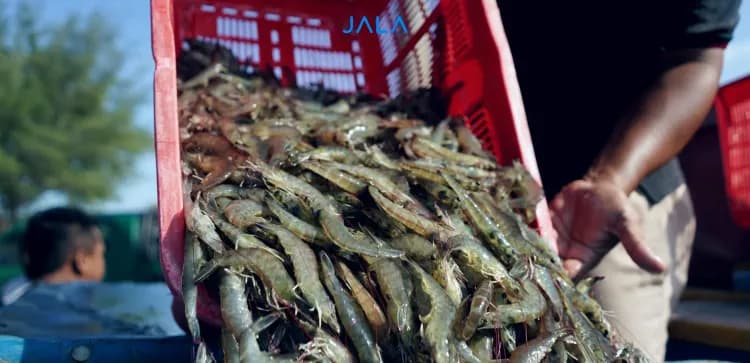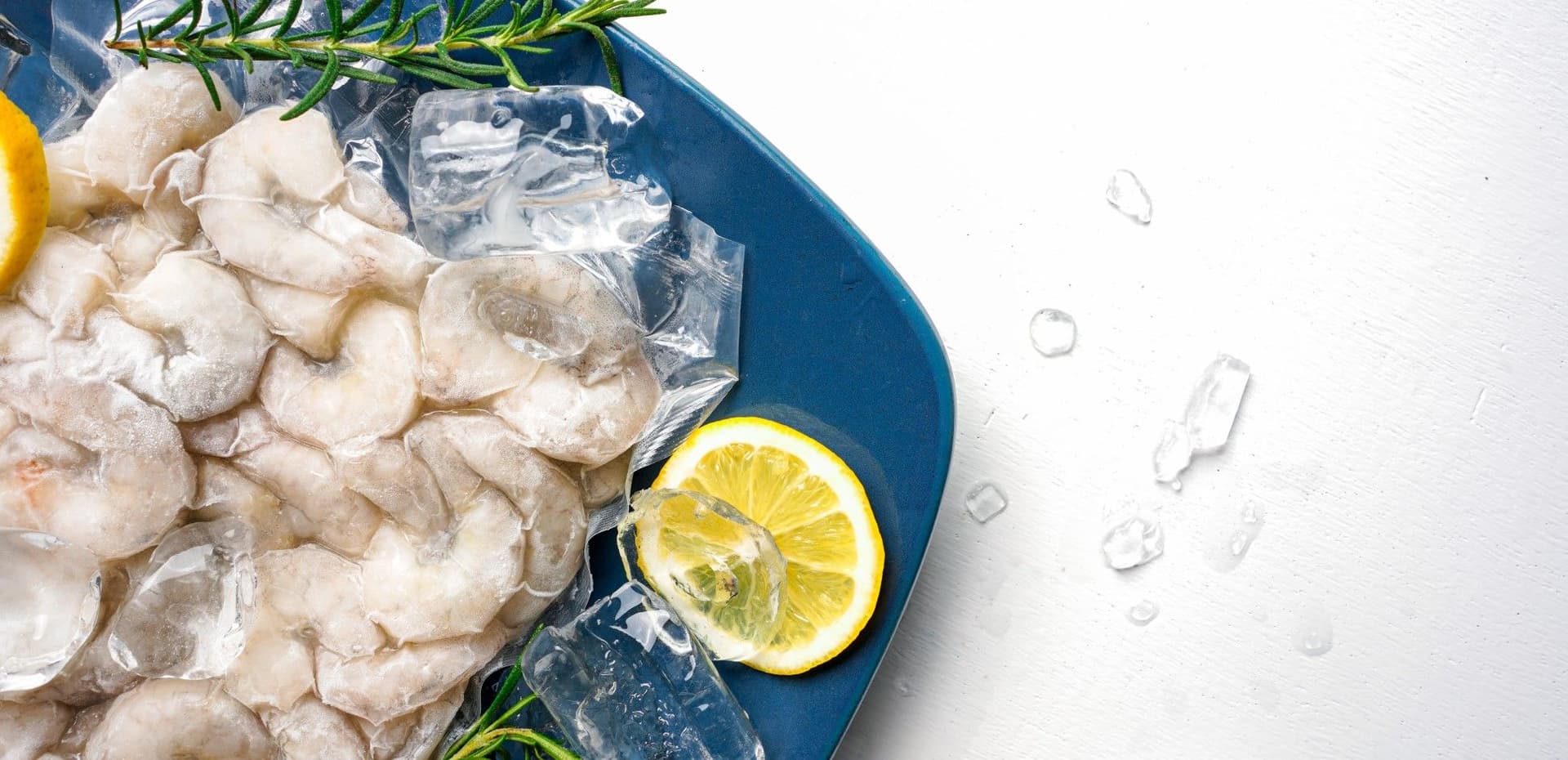
The increasing global population calls for the increased demand to meet protein needs. Protein is an important nutrient which supports child growth, speeds up the healing process, and many more functions.
Shrimp is one of the important and easily available protein sources. The demand for shrimp consumption increases annually. To meet this need, consumers need to be smart in choosing high quality shrimp which does not just help to meet protein requirements, but also obtain products with well-maintained nutritional value.
Identifying high quality shrimp
Both household and restaurant business consumers need to be aware of the signs of high quality shrimp, which are:
- No foul or rotten smell which originates from rotting process due to improper storage
- The shrimp shell or carapace is transparent and adheres strongly to the shrimp body or head. If required, consumers can directly examine the attachment of the shell
- A firm texture, which indicates that the shrimp is still fresh and has not undergone rotting process
- Healthy shrimp can also be identified through an intact and filled gut to avoid purchasing products that have been contaminated with diseases or harmful pathogens.
The long and crucial process of maintaining shrimp quality from farm to fork
Shrimp is a perishable commodity, making the maintenance process from farm to fork highly crucial. This begins with shrimp cultivation to transport.
1. During harvest To produce high quality shrimp, harvest should be done when the temperature is not too high and as quickly as possible. Ensure that the net is not too packed to prevent shrimp from getting pressed and injured. Immediately clean off the mud and other dirt that may remain on the shrimp from the farm.
2. Post-harvest After cleaning, sortation, and weighing, the shrimp should be immediately kept at low temperature to slow down the spoilage process. Low temperatures inhibit the activity of decomposing bacteria. The recommended temperature is -4℃.
3. Transportation from the farm to processing company The harvested shrimp is then transported from the farm to an aquaculture processing company or unit. Sometimes, they are directly transported to the market. When being transported, the shrimp should be stored in an ice-filled container at a ratio of 1:1 and stacked in layers.
4. Processing The processing stage is commonly conducted in fish processing plants and involves several processes. It begins with the reception of raw materials, followed by inspection, weighing, and packing. During the raw material reception and inspection stage, various tests are usually conducted, such as antibiotic testing, microbiological testing, and testing for the presence of certain chemical substances. Once the shrimp has passed the tests, it is then stored. The storage of shrimp is typically done in conditions with a temperature of ≤3℃. To maintain the quality of the shrimp, it is often packed in waterproof containers. Packing and storage should be done carefully to avoid any physical damage to the shrimp. The process, from inspection to packaging, should also be carried out as quickly as possible to prevent physical damage.
5. Transport to consumers At the final stage, shrimp is transported to consumers by certain conditioning to maintain its quality. The distribution chain may be long enough, so proper storage handling must be prioritized, which involves storing in an ice box with a cooler or mixed with ice to preserve its freshness.
Choosing high quality shrimp with guaranteed freshness
One of JALA’s signature products is fresh shrimp in frozen condition. JALA has a network of shrimp farms and collaborates with processing companies to produce frozen shrimp through a short processing chain. Harvest-process-deliver.
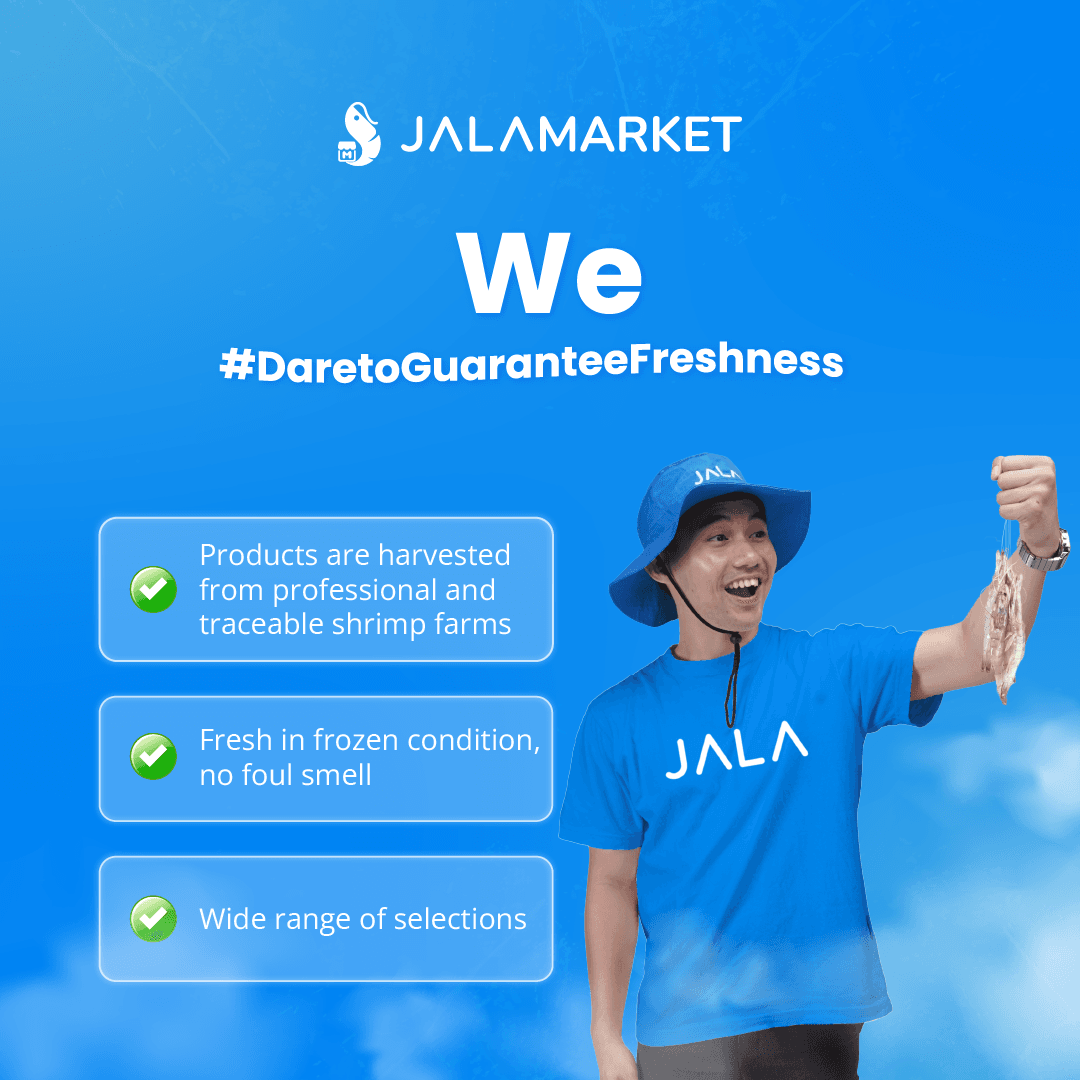 Harvested shrimp is then processed in a HACCP grade A standardized and halal-certified company. During the distribution process, the shrimp is maintained in frozen condition, thereby maintaining its quality and freshness until it reaches the hands of consumers. Shrimp products are suitable for fulfilling the needs of hotels, restaurants, catering services, as well as households. The product variations include HOSO, PUD, dan PDTO.
Harvested shrimp is then processed in a HACCP grade A standardized and halal-certified company. During the distribution process, the shrimp is maintained in frozen condition, thereby maintaining its quality and freshness until it reaches the hands of consumers. Shrimp products are suitable for fulfilling the needs of hotels, restaurants, catering services, as well as households. The product variations include HOSO, PUD, dan PDTO.
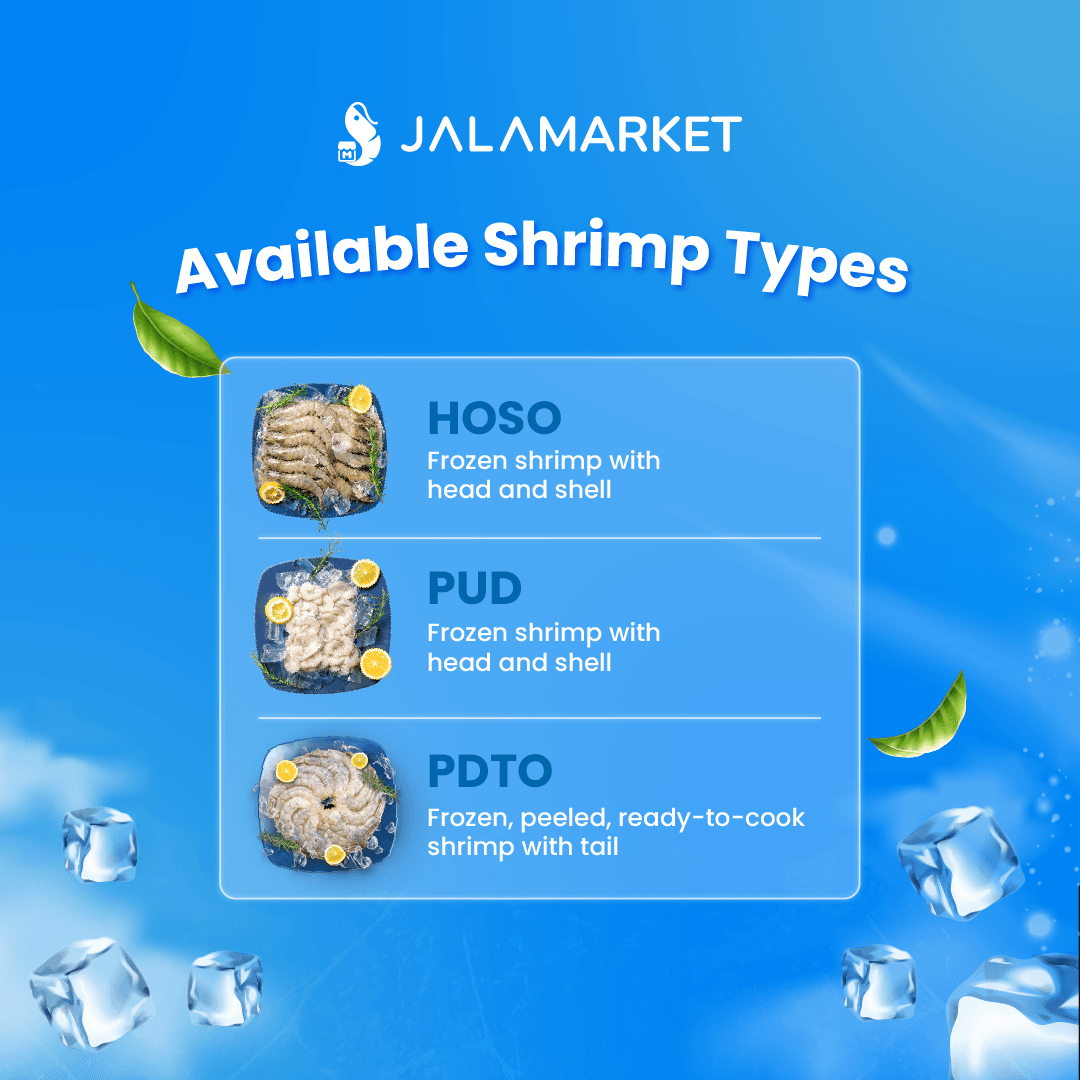 The demand for safe and traceable shrimp products
In addition to the increasing demand, there is also a growing concern for food product safety. Consumers today not only choose based on the quality and cleanliness of the product but also seek environmentally-friendly options. Consumers are willing to pay more for products that are of high quality and guaranteed safety, especially in developed countries. Food authorities or importers in the destination countries for export consider products that have traceability value.
The demand for safe and traceable shrimp products
In addition to the increasing demand, there is also a growing concern for food product safety. Consumers today not only choose based on the quality and cleanliness of the product but also seek environmentally-friendly options. Consumers are willing to pay more for products that are of high quality and guaranteed safety, especially in developed countries. Food authorities or importers in the destination countries for export consider products that have traceability value.
More than half of the shrimp products are currently sourced from aquaculture. Considering the excessive exploitation of natural habitats, shrimp aquaculture has become an important source for meeting global shrimp demand. Aquaculture is also one of the most efficient cultivation methods compared to other forms of farming. The aspects of product safety and traceability are important added values in shrimp aquaculture products.
As a result, the definition of quality products has expanded to include not only the physical aspects of the product but also the consideration of sustainability in its production. Producing high-quality and safe products is the responsibility of shrimp farmers, which can be achieved by implementing environmentally-friendly aquaculture management and ensuring traceability through proper recording of the cultivation process.
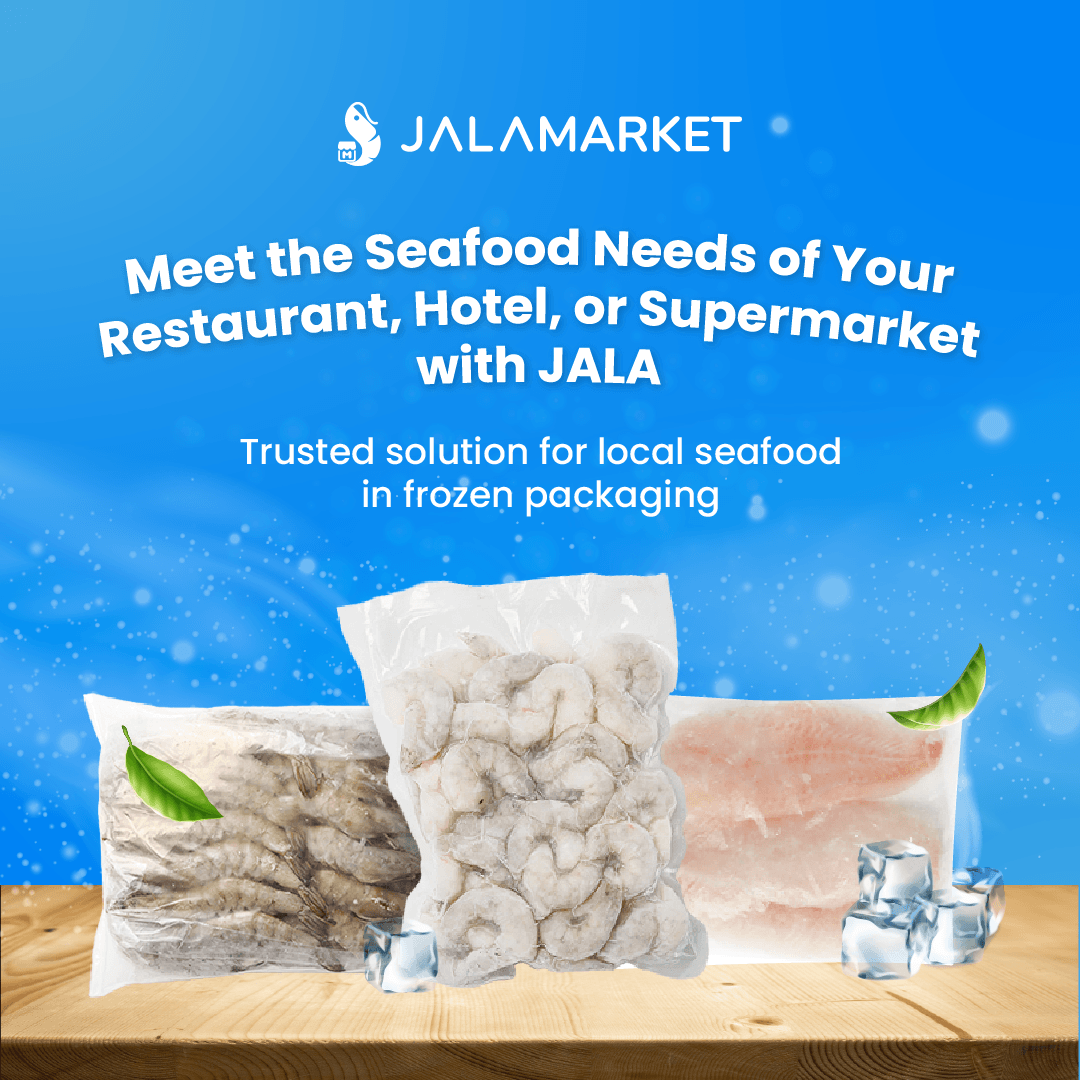 The network of shrimp farms which supply their shrimp to JALA Market have traceability as an added value for their shrimp. Fulfilling the need for high quality shrimp is our commitment, because we #DaretoGuaranteeFreshness. Learn more about JALA Market’s frozen shrimp products! For further inquiries and orders, please contact 0813-2551-4194.
The network of shrimp farms which supply their shrimp to JALA Market have traceability as an added value for their shrimp. Fulfilling the need for high quality shrimp is our commitment, because we #DaretoGuaranteeFreshness. Learn more about JALA Market’s frozen shrimp products! For further inquiries and orders, please contact 0813-2551-4194.

